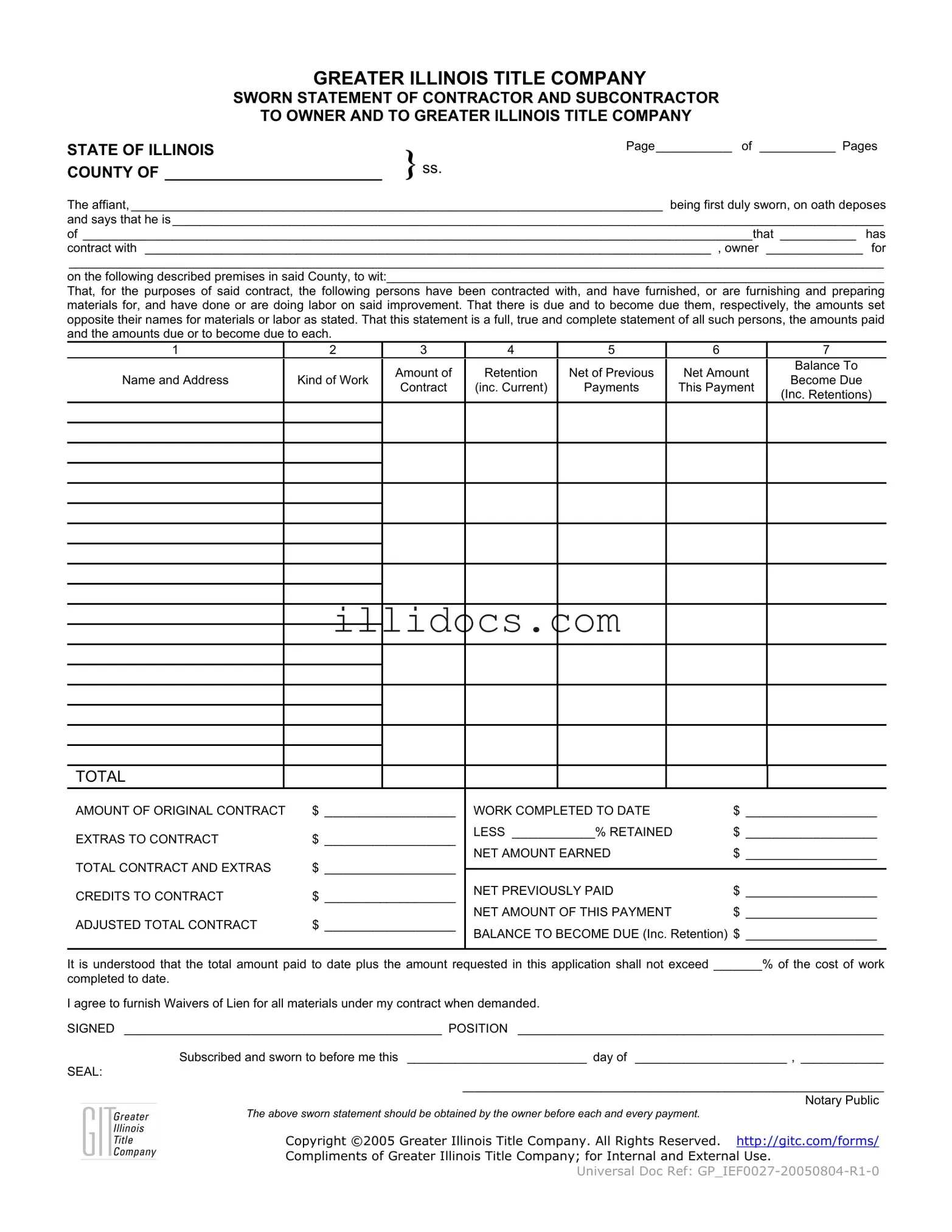What is the purpose of the Illinois Sworn Statement form?
The Illinois Sworn Statement form serves as a declaration from contractors and subcontractors regarding their work and payments related to a specific project. It ensures transparency between the parties involved, particularly the owner and the contractors. By detailing the amounts due for labor and materials, this form helps prevent disputes over payment and establishes a clear record of financial obligations related to the project.
Who needs to complete the Illinois Sworn Statement?
Typically, the contractor and any subcontractors who have worked on the project are required to complete this form. It is essential for anyone who has provided labor or materials for the construction or improvement of a property. The owner of the property should also be involved in the process to ensure they are aware of all financial commitments associated with the project.
When should the Illinois Sworn Statement be submitted?
This sworn statement should be obtained before each payment is made to the contractor or subcontractors. By doing this, the owner can verify that all parties involved are accounted for and that payments align with the work completed. It acts as a safeguard to ensure that funds are distributed appropriately and that there are no outstanding claims against the property.
What information is required on the Illinois Sworn Statement?
The form requires specific details such as the names and addresses of all contractors and subcontractors, the kind of work performed, and the amounts due for each party. Additionally, it includes sections for the total amount of the original contract, work completed to date, any extras to the contract, and the net amount earned. This comprehensive information helps clarify the financial status of the project.
What are Waivers of Lien, and why are they important?
Waivers of Lien are legal documents that contractors and subcontractors sign to relinquish their right to file a lien against the property for unpaid work. In the context of the Illinois Sworn Statement, the contractor agrees to provide these waivers upon request. This is crucial for the owner, as it protects them from potential claims by subcontractors or suppliers who may not have been paid, ensuring that they have clear title to the property.
What happens if the Illinois Sworn Statement is not completed?
If the Illinois Sworn Statement is not completed, the owner may face risks, such as disputes over payments or claims against the property. Without this documentation, it becomes challenging to track who has been paid and who still has outstanding amounts due. This lack of clarity can lead to financial complications and potential legal issues down the line, making it essential to adhere to this requirement for all construction projects.
